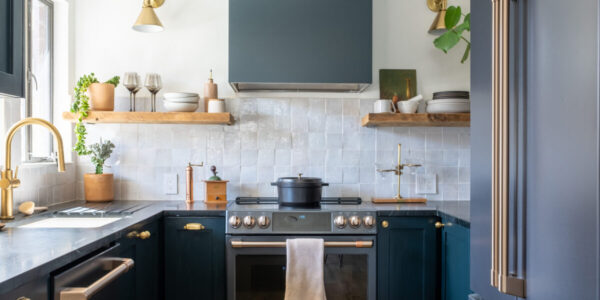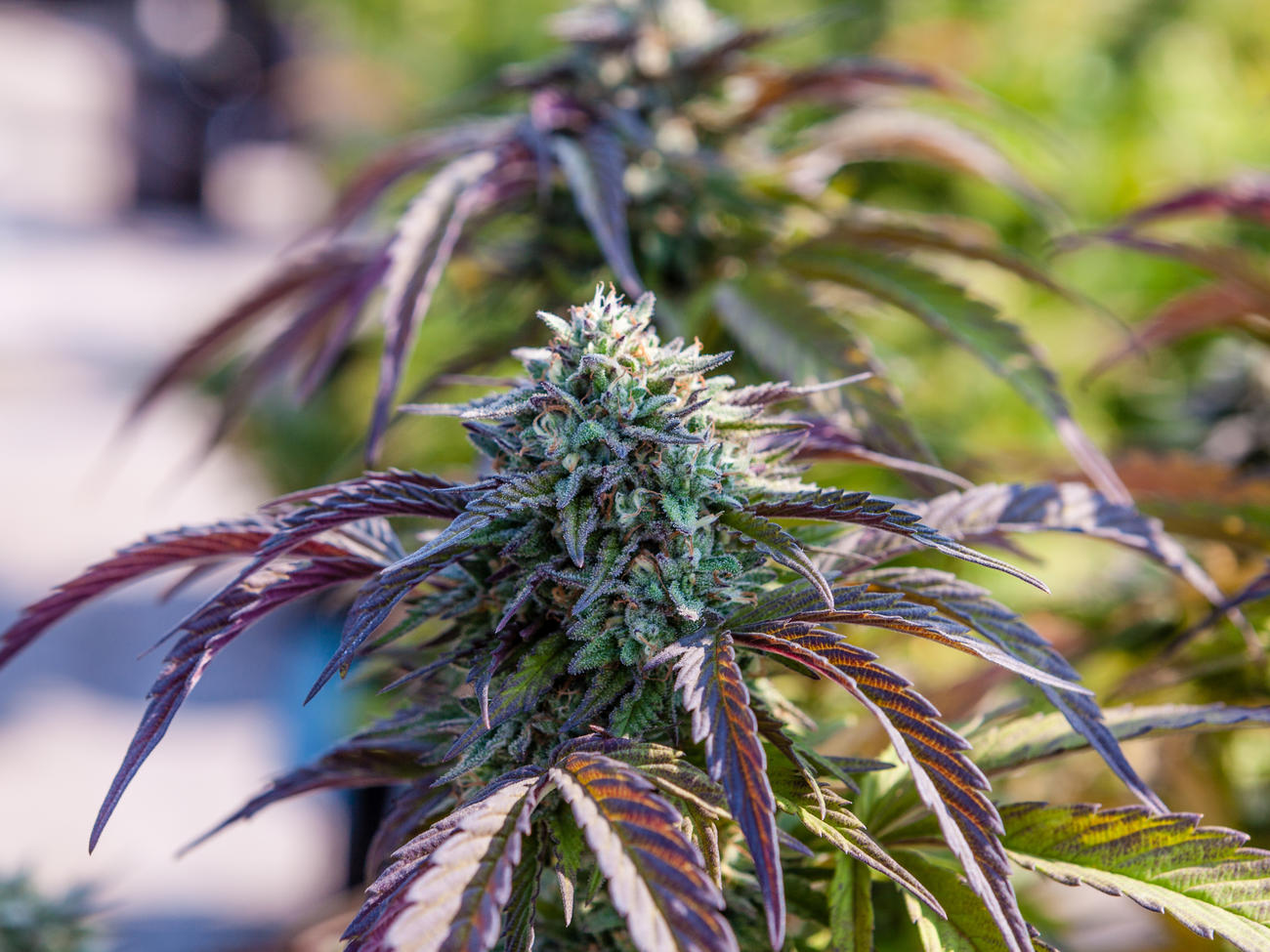
Our Guide to Landscaping with Cannabis

This article is for informational purposes only and does not constitute medical or legal advice. While the cultivation, possession, distribution, and use of marijuana for medicinal or recreational purposes may be legal in certain areas, marijuana is illegal under U.S. federal law and in certain states and countries. Readers should consult the local and federal laws in their jurisdiction and qualified medical and legal professionals. Marijuana use can be harmful to certain individuals, including minors and women who are pregnant or breastfeeding.
The cannabis legalization movement is gaining momentum across the Western United States, and with it “ganja gardens” are starting to pop up in backyards across the region, with master gardeners, landscape architects, designers, and horticulturalists of all stripes becoming curious about the benefits of incorporating cannabis into their garden landscapes.
There is good reason to be curious. In addition to its much-touted medical and recreational benefits, after more than 80 years of prohibition, cannabis has an allure and mystique all its own. A wind-pollinated annual that has been cultivated for millennia in varied climates around the globe, there are hundreds of cannabis varietals (or strains), each with strikingly different characteristics–from size and stature to fragrance and flowering cycle. With so much to explore, it’s not surprising that this unique plant has inspired so much recent interest from the horticulture community. So how to get started?
First, be aware of the rules. From the federal government’s perspective cannabis is still illegal to grow and possess. However, 29 states now allow medical cannabis (meaning its use or production requires consent from a licensed doctor), and eight currently allow “recreational use” by any adult. But while there is a definite conflict between state and federal law, thus far the federal government has taken a hands-off approach to cannabis, especially when it comes to small-scale personal consumption and cultivation.
“Home cannabis gardeners should too familiarize themselves with their specific state’s parameters for home grows and, armed with this information, contact their local government to determine if additional local laws or restrictions may apply,” suggests Cassia Furman, a managing attorney at the national cannabis law firm Vicente Sederberg’s Los Angeles office. “Since backyard cannabis cultivation is still quite new, many local governments have not yet adopted an official policy and there is opportunity for well-informed gardeners to help educate their local officials and promote more open, neighborhood-oriented approaches to incorporating cannabis into local gardens and greenhouses.”
Growing Basics
For those curious and adventurous enough to get started, cannabis can be a wonderful addition to a variety of garden landscapes. A few plant basics to keep in mind:
- While cannabis varietals offer vast differences in aroma, growth habit, and morphology, most produce dense inflorescences of flowers, called colas, in late summer and fall. These colas are the consumable “buds” that cannabis is so famous for.
- Because cannabis is wind-pollinated, its flowers lack the profusion of petal colors found in many other annual flowers. In fact, cannabis plants produce no petals at all. Still, cannabis flowers are quite showy, adding interesting forms to the garden, and in mid to late fall, its leaves and colas can demonstrate impressive displays of color.
- A highly aromatic annual flower, cannabis is a hardy and vigorous grower which prefers full sun and well-drained soils, and performs well in a variety of climates.
- Depending on the variety and environment, plants can range from dense clumping shrubs measuring around four feet in height to lanky trees reaching 12 feet or more.
Landscaping Ideas
Cannabis can be creatively incorporated into the landscape of almost any type of garden. Some fun and creative ideas to consider include:
Incorporate It into a Scent Garden
Cannabis is famous for its characteristically pungent aroma, but many are unaware of just how varied the bouquet can be. Cannabis has been found to produce as many as 140 aromatic compounds known as “terpenes.” These compounds create unique smells ranging in nature from pine to pepper to mango, and everything in between, making cannabis a standout star in any olfactory garden. Cannabis partners well with other aromatic favorites such as lavender, rosemary, jasmine, and salvia. Aromatic gardens are well known to have mood-enhancing benefits, and adding cannabis can ensure that every walk through the garden is an intoxicating experience.
Recommended strains:
- ‘Dream queen‘ (strong fruit-punch aroma)
- ‘Gorilla glue‘ (minty citrus aroma)
- ‘Fire og‘ (astringent piney aroma)
- ‘Sour tangie‘ (sour-citrus aroma)
Cultivate It in a Container Garden
They don’t call cannabis “weed” for nothing. An aggressive and prolific plant, its size and stature can be overwhelming for some gardens. Using cannabis in a container garden can be a great alternative, providing a flexible, less labor-intensive mobile decor option. Containers will keep the size of cannabis plants manageable–between three and six feet tall depending on the size of the pot and varietal. Growing cannabis in containers adds tremendous interest to any patio or seating area, and ensures that those with limited space can experience the joy of cannabis gardening. Containers also allow gardeners to relocate the plant as needed, perhaps into optimal spots for sunlight exposure (cannabis does especially well on south-facing balconies), or even into the garage while the in-laws visit.
Recommended strains:
Grow It as Part of a Kitchen Garden
For those looking for a more hands-on cannabis gardening experience, the kitchen garden can be a perfect place for cannabis. In the full sun and rich soil of an edible garden, cannabis will grow to an impressive specimen. It does especially well in raised-bed configurations, and is at home among larger-stature kitchen garden heavyweights like tomatoes and squash. Be careful not to place cannabis plants too close to daintier herbs or vegetables like carrots, which may get crowded out. Vegetable gardens also provide great access for pruning, scouting, and harvesting of cannabis, and can be the perfect choice for the horticulturalist looking to get to know this new species more intimately.
Recommended strains:
Use It as a Garden Backdrop to Add Texture
For a textured backdrop, cannabis’s expansive foliage and unique leaf structure are attractive complements to a variety of landscape designs. Although it grows as an annual, the cannabis plant’s aggressive growth makes it suitable for replacing many perennials as a backdrop or texture plant in mixed beds. Cannabis is well-known for its distinct serrated palmate leaves, and as foliage, it resembles and can be a suitable design replacement for certain varieties of Japanese maple, especially in full-sun gardens. Cannabis foliage can vary significantly in shape and texture, as well as color. Foliage colors from lime green to dark evergreen are common, with dramatic hues from pink to crimson to aubergine in the fall season. Cannabis stems and leaf petioles frequently take on pink and purple hues. This beautiful plant is a creative and unexpected way to subtly add texture and variety to a garden. When done right, casual visitors may not even notice its presence. (Imagine the look on their faces when you call it to their attention!)
Recommended strains:
- ‘Girl scout cookies‘ (unique dark green asymmetrical foliage with twisting branches)
- ‘Gorilla glue‘ (upright bushy growth with large leaves)
- ‘Alien og‘ (grows into large dense mounds, six feet or more high, with very large leaves)
Use It to Add Color to a Garden
Cannabis is a standout for a splash of color in any garden setting, and can add dramatic and varied hues to fall gardens at a time when summer flowers are often fading. Cannabis flower inflorescences–the consumable buds produced on the plant–start developing in mid-summer and ripen from mid to late fall depending on location and varietal. As flowers mature these impressive inflorescences, known as “colas,” often include showy displays of color, adding tremendous beauty to garden landscapes and peaking at the end of the fall season as flowers mature and temperatures drop.
Recommended strains:
- ‘Sour patch kids‘ (lime green colas with purple accents and golden hairs)
- ‘Strawberry banana‘
- ‘Ken’s grandaddy purple‘ (classic purple flowers)
- ‘Sherbet‘ (develops impressive fuchsia color on fan leaves and colas)
Writer Daniel Grace is a pioneer, activist, and expert in the California cannabis industry, and is the president and founder of Dark Heart Nursery, California’s most sought-after producer of premium quality cannabis starter plants (clones).
